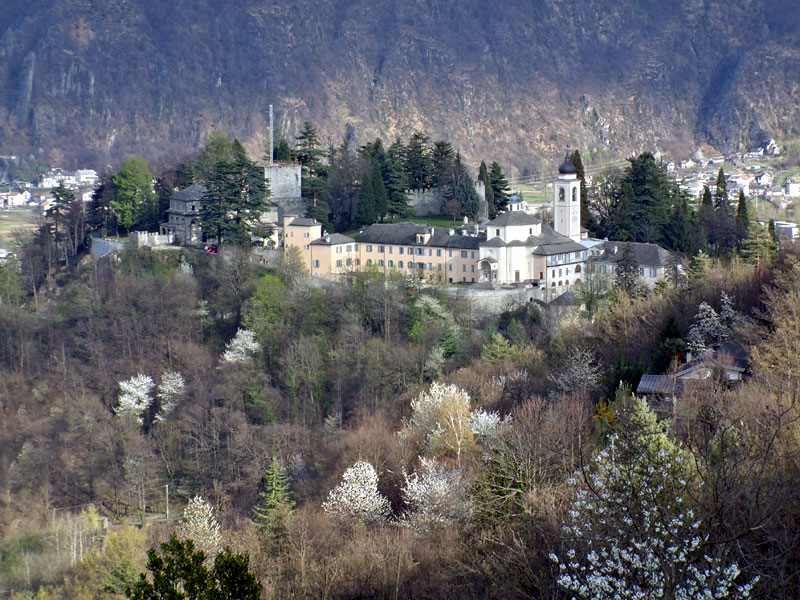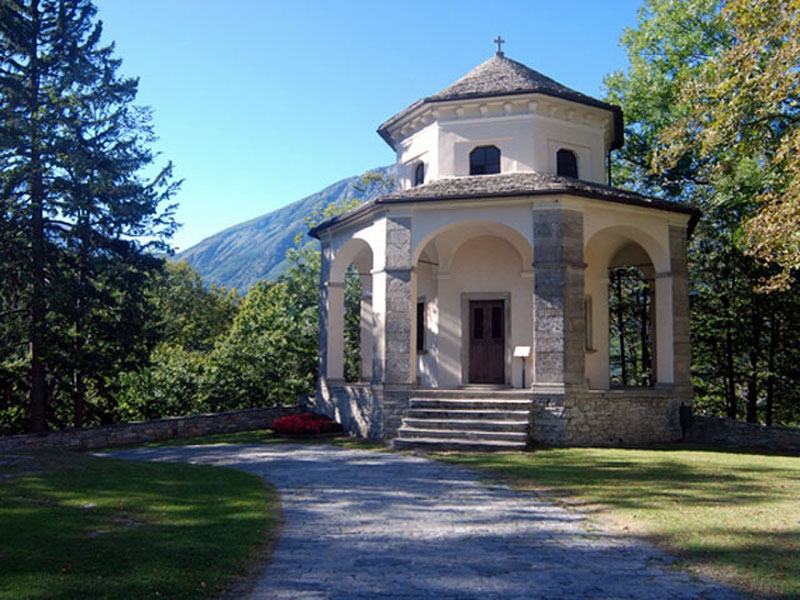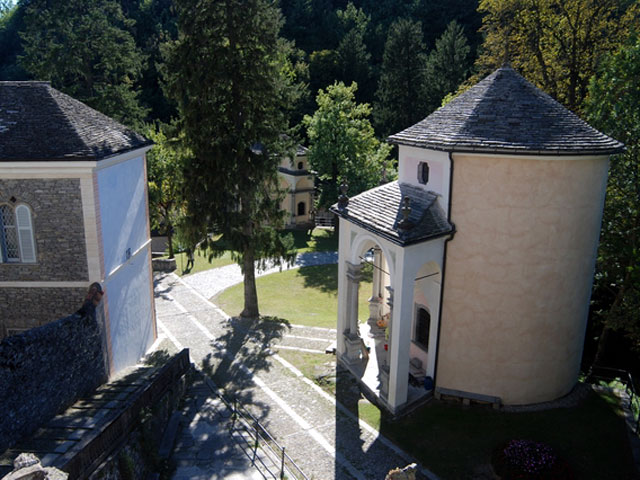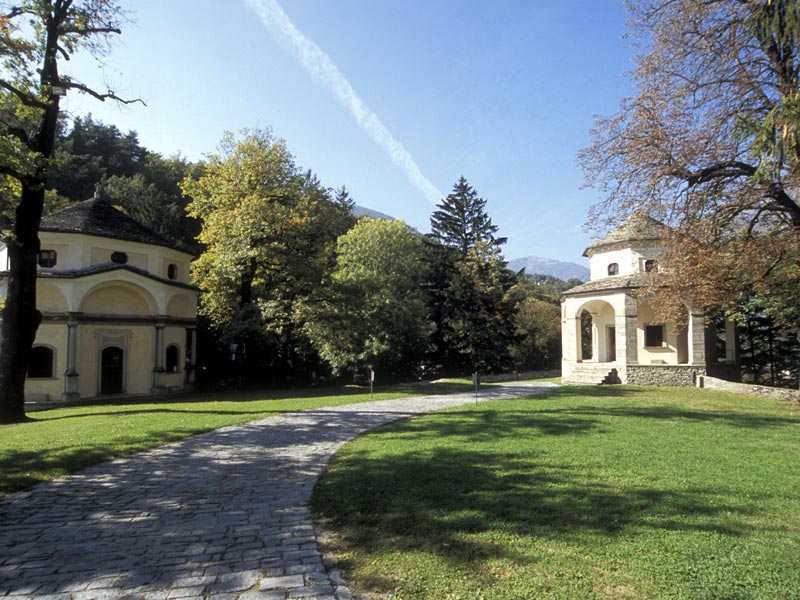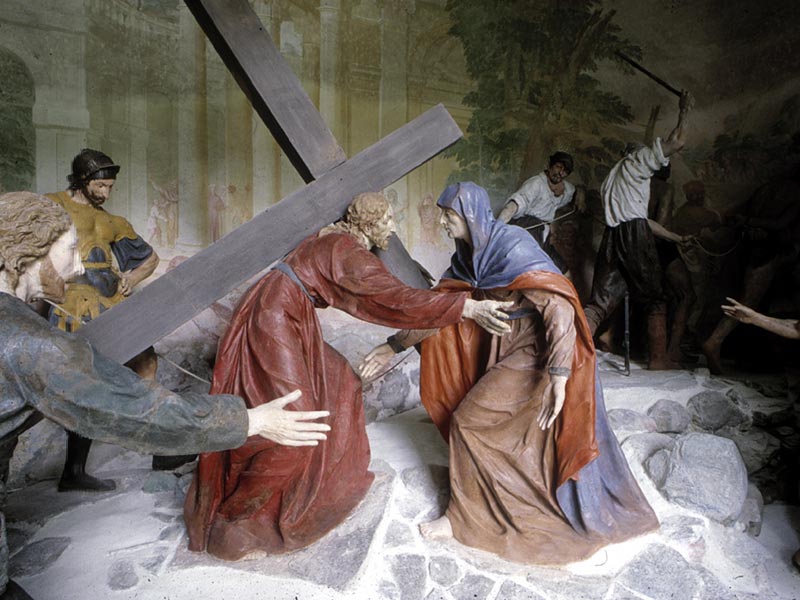Protected Area
Identity Card
- Land Surface Area: 25.53 ha
- Lower altitude (m): 279
- Higher altitude (m): 414
- Regions: Piemonte
- Provinces: Verbano-Cusio-Ossola
- Municipalities: Domodossola
- Establishment Measures: LR 65 27/12/1991 - L.R. 19/2009 e L.R. 19/2015
- PA Official List: EUAP0755
- Park Authority: Ente di gestione dei Sacri Monti
History...
Those who leave the shores of Lago Maggiore to enter the narrow Val d'Ossola and reach the basin where the small "capital" of this Italian corner set in the Swiss territory is situated, cannot miss it. The hill, which distinguishes itself with its summit from the slopes of the Moncucco, was once a fortified rampart against the invaders from the North; for more than three centuries it has been dedicated to the memory and the veneration of the crucified and resurrected Redeemer.
The cross shining in the night, almost a sentinel of the sleep of the population living in the basin of the Ossola, rises on the massive central keep of the ancient castle. Near the keep, which was built on the highest rocky spur of the hill of Mattarella, there is an imposing wall with the remains of the corner towers showing still today what once was the third circle of walls surrounding it in the past.
The origin of the castle is lost in the history before the year 1000. In 1014, the Emperor Henry of Saxony gave it as a gift to the "Comitato Ossolano" and to the Church of Novara, and the Bishop transformed it into his own residence. Later on, in 1381, it became property of the Visconti from Milan together with the whole Ossola, by preserving its function of important bulwark in defence of the Alpine passes until, after several events, it was destroyed in 1415 by the Swiss who conquered the Ossola.
In the second half of the 17th century, after two centuries of abandonment and ruins, a new history began for the hill of Mattarella. Together with the rests of the ancient castle witnessing invasions, struggles, and wars, new buildings talking a completely new language arose: that hill became Monte Calvario (the Calvary), a holy memory of the Passion of Christ. Two Capuchin friars of the monastery of Domodossola, the fathers Gioacchino from Cassano and Andrea from Rho, were the first promoters of the work; and the Community of Ossola committed itself. In 1656 the cross was placed on the hill, and other crosses were placed along the uphill path, in the places chosen for the Way of the Cross chapels. The first stone was laid on 8th July 1657; in March 1662 the great artistic crucifix by Dionisio Bussola was placed over the altar.
The arrival of Antonio Rosmini at the Sacro Monte Calvario in February 1828 marked the beginning of a new era in the history of the hill of Mattarella. The contemporary chronicles talk about a re-flourishing of the popular devotion for that holy place: several pilgrims came also from distant places to receive the Sacraments and to take part in the religious services in the Sanctuary of the Crucifix. However, only later in 1863 - after Rosmini's death - the religious center he founded could definitely settle on this Sacro Monte, transforming itself in a spirituality and vocational house.
Faith...
In 1801, after the suppression of the religious orders, many properties of the Sanctuary were put up for auction and were sold. The house of the Spiritual Exercises was not sold, since no one wanted to buy it and in a few years it was abandoned and became uninhabitable.
Art
Among the artists working for Sacro Monte Calvario di Domodossola we should remember the architect Tommaso Lazzaro from Val d'Intelvi, to whom all the works built since the foundation until 1690 were assigned.
After this date, the architects Antonio and Domenico Perini, always from Val d'Intelvi, worked here and afterwards Pier Maria Perini, who in 1772 created a precious and complete map of the Sacred Mountain, which today is preserved in the cell of Antonio Rosmini.



